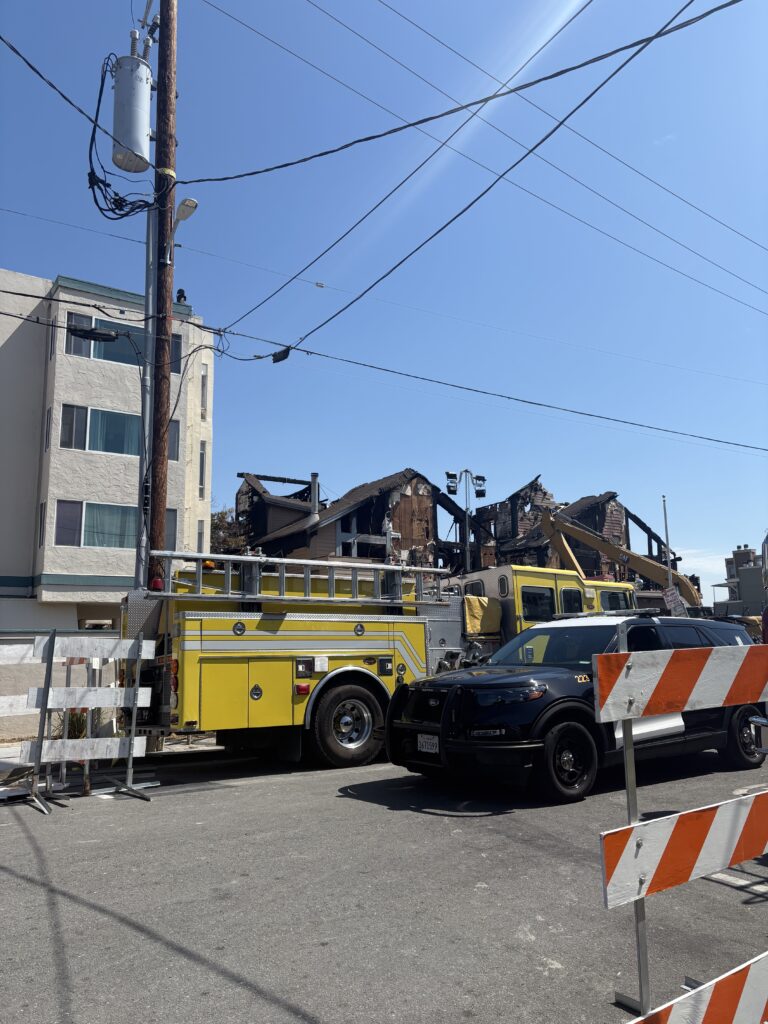Marin Voice: Act now, avoid future San Rafael housing disasters
September 22, 2025

Jeffrey Rhoads
PUBLISHED: September 13, 2025 at 12:54 PM PDT
The fire at 516 Canal St. on Aug. 21 tragically took two lives. It also destroyed 19 apartments and left over 50 people searching for a place to live.
Fortunately, our first responders, including a fire boat on the canal, limited the loss to one building. Authorities have called the fire suspicious, and it remains under investigation. The building had just passed a fire inspection.
The Canal Alliance and the Marin Community Foundation nonprofit organizations are providing phenomenal assistance to the displaced with the help of others in the community. But where will they go? Housing for the poor, including our essential workers and their families, is fragile and in exceedingly short supply.
I think that much of the Canal neighborhood in San Rafael is equivalent to New York’s Lower East Side of the early 1900s. While not squalid brick tenement buildings, this neighborhood of apartment buildings has the highest population density in Marin. In many ways, it is our gateway immigrant community.
Like elsewhere in Marin, rents are high. People on the first rung of the economic ladder share the rent to make ends meet. We need to protect this fragile housing and assure that residents have safe and healthy places to live.
Building new affordable multifamily housing is costly, particularly when it is structured to secure tax advantaged “low-cost housing” debt and equity. The cost per apartment is commonly $800,000 or more, depending on unit size and number of bedrooms.
Purchasing and rehabilitating existing apartments is far less expensive considering all costs associated with building a new project. At first this may seem counterintuitive, particularly considering that many existing buildings suffer from deferred maintenance. However, new projects require demolition and site improvement costs, overcoming challenges and expense gaining approvals, finance costs that increase with time delays, compliance with updated code requirements and meeting return expectations for equity investors.
Residents are protected from gentrification when existing buildings are bought, spruced up and managed by community organizations who provide and effectively manage affordable housing.
I worry that many apartments in that neighborhood, and elsewhere in San Rafael, are at risk of collapse in a major earthquake. Built between the 1950s and 1970s, some of them share a common design flaw. Known as “soft story” buildings, each is supported by rows of thin pipe columns over ground-floor parking garages. In all the strong California earthquakes since the 1971 Sylmar quake, some columns have failed, causing certain buildings to collapse. People have been displaced and lives lost.
We are behind on remedying this. San Francisco requires owners to strengthen their buildings. The experience of S.F. officials show that tenants are not displaced during construction. Garage openings are strengthened, usually by adding steel beams and columns. The cost is approximately $10,000 per apartment. The $800,000 required to build a new unit is sufficient to protect 80 existing soft-story apartments and their residents.
Action is required now to protect our most vulnerable. The actions by the city are to complete an inventory of buildings at risk and require owners to strengthen their soft-story buildings by a specific date. A good milestone would be five years.
To minimize impacts on rents, funds need to be sourced to assist building owners in paying for the structural improvements. When provided, this must be conditioned on not passing costs to tenants. The work doesn’t impact quality of life and won’t justify higher rents, particularly when funding is provided. It will save lives and prevent precious housing from being lost in the next big earthquake.
Let’s get this done: People’s lives and homes depend on our city and community leaders making this happen. The clock is ticking till the next “big one.”